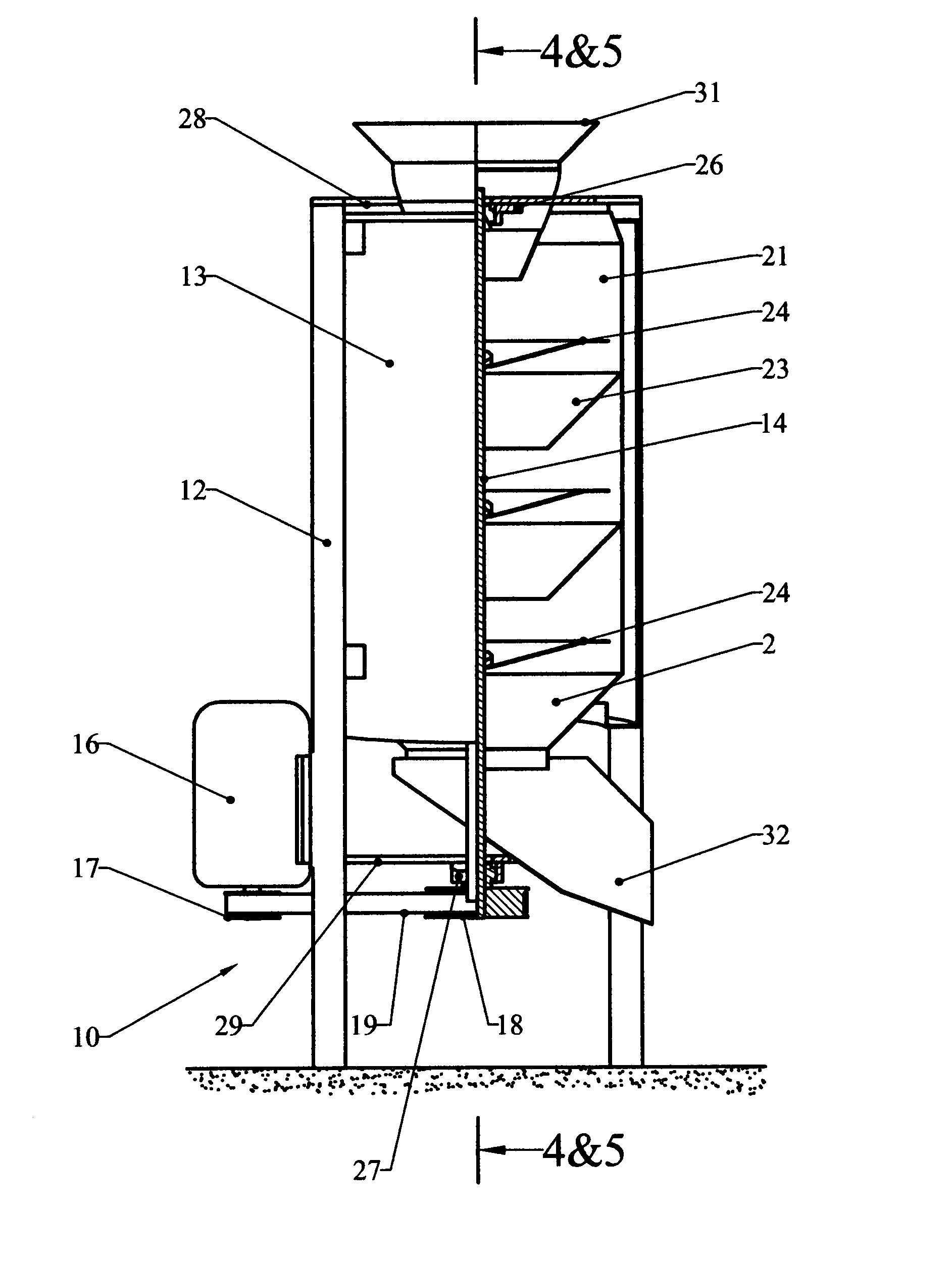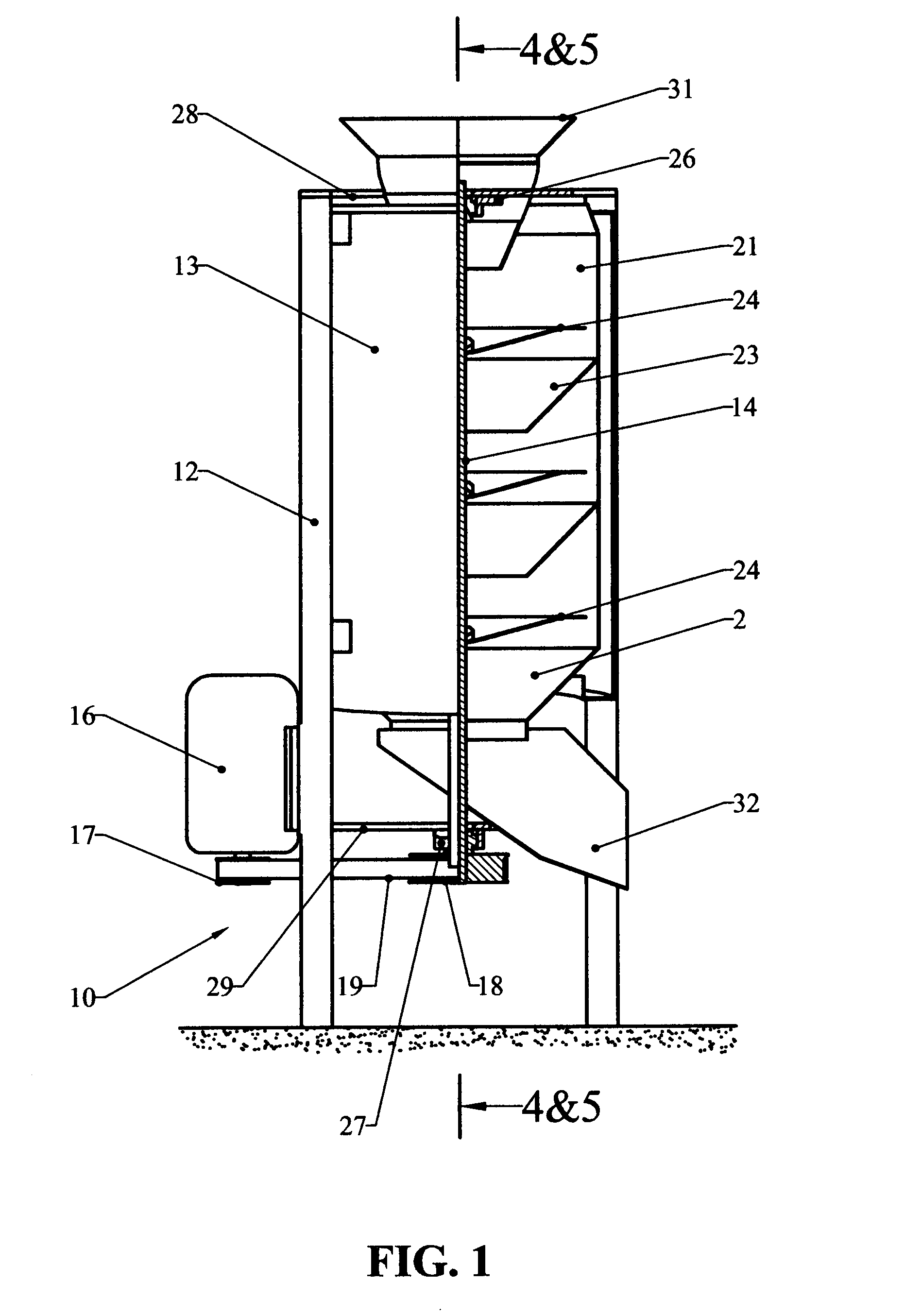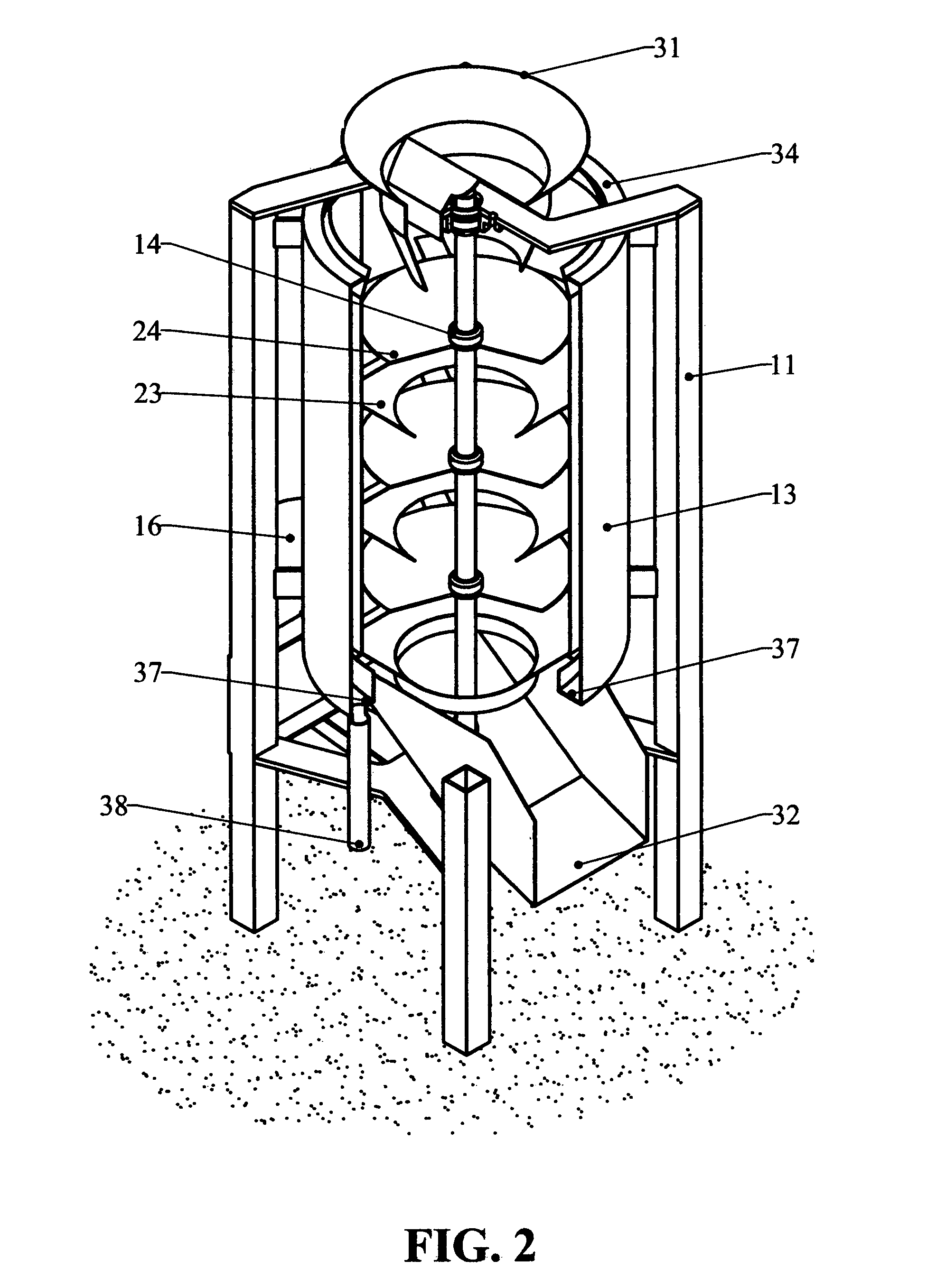Method for separating cooking oils from snack food products through a quasi-continuous centrifuge action
a centrifuge action and cooking oil technology, applied in separation processes, centrifuges, lighting and heating apparatuses, etc., can solve the problems of undesirable cooking oil “carrying out”, batch process rendering non-continuous an otherwise continuous process, batch process, etc., to achieve minimal product damage, low rotational speed, and minimal affecting the shape and texture of the product
- Summary
- Abstract
- Description
- Claims
- Application Information
AI Technical Summary
Benefits of technology
Problems solved by technology
Method used
Image
Examples
example 1
[0026]Expanded pellets of approximately rectangular shape 50 mm by 40 mm by 4 mm thick and having irregular, wavy surface texture and shape were fed continuously at a rate of 60 kg / hr, directly from the fryer into a centrifuge having a 3-stage, 400 mm diameter drum. The centrifuge was running at 9.2 seconds cycle duration, as follows:[0027]1) 0.2 seconds acceleration time;[0028]2) 5 seconds at high speed of 550 rpm;[0029]3) 1 second deceleration time;[0030]4) 3 seconds at low speed of 30 rpm.
[0031]Samples of pellets taken before and after the centrifuge treatment were compared. Directly from the fryer, the pellets appeared wet, with a liberal coating of oil on the surface of each pellet, and the total oil content of the sample was measured ay 14.4%. After centrifuging the pellets appeared noticeably dryer than before and the total oil content of the sample was measured at 9.6%.
example 2
[0032]Expanded pellets in the shape of small donuts of approximately 22 mm outside diameter and 7 mm cross-sectional diameter were fed continuously at a rate of 220 kg / hr, directly from the fryer into a centrifuge having a 2-stage, 400 mm diameter drum. The centrifuge was running at 6.2 seconds cycle duration, as follows:[0033]5) 0.2 seconds acceleration time;[0034]6) 4 seconds at high speed of 550 rpm;[0035]7) 1 second deceleration time;[0036]8) 1 second at low speed of 30 rpm.
[0037]Samples of pellets taken before and after the centrifuge treatment were compared. Directly from the fryer, the pellets appeared wet, with a substantial quantity of oil retained in the spaces between pellets, and the total oil content of the sample was measured ay 27.1%. After centrifuging the pellets appeared noticeably dryer than before and the total oil content of the sample was measured at 13.7%.
example 3
[0038]Expanded pellets in the shape of sticks approximately 150 mm long and oval, approximately 6 mm by 8 mm, in cross section were fed continuously at a rate of 150 kg / hr, directly from the fryer into a centrifuge having a 2-stage, 400 mm diameter drum. The centrifuge was running at 6.2 seconds cycle duration, as follows:[0039]9) 0.2 seconds acceleration time;[0040]10)4 seconds at high speed of 550 rpm;[0041]11) 1 second deceleration time;[0042]12) 1 second at low speed of 30 rpm.
[0043]Samples of pellets taken before and after the centrifuge treatment were compared. Directly from the fryer, the pellets appeared wet, with a substantial quantity of oil retained on the surfaces of the sticks, and the total oil content of the sample was measured ay 20.5%. After centrifuging the pellets appeared noticeably dryer than before and the total oil content of the sample was measured at 13.1%. In all 3 examples, the degree of de-oiling was similar to that typically achieved in a conventional, b...
PUM
| Property | Measurement | Unit |
|---|---|---|
| time | aaaaa | aaaaa |
| time | aaaaa | aaaaa |
| diameters | aaaaa | aaaaa |
Abstract
Description
Claims
Application Information
 Login to View More
Login to View More - R&D
- Intellectual Property
- Life Sciences
- Materials
- Tech Scout
- Unparalleled Data Quality
- Higher Quality Content
- 60% Fewer Hallucinations
Browse by: Latest US Patents, China's latest patents, Technical Efficacy Thesaurus, Application Domain, Technology Topic, Popular Technical Reports.
© 2025 PatSnap. All rights reserved.Legal|Privacy policy|Modern Slavery Act Transparency Statement|Sitemap|About US| Contact US: help@patsnap.com



